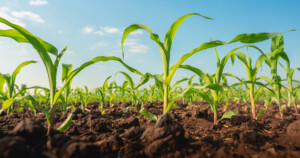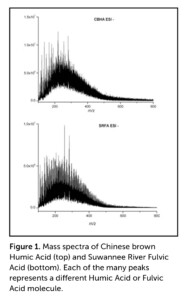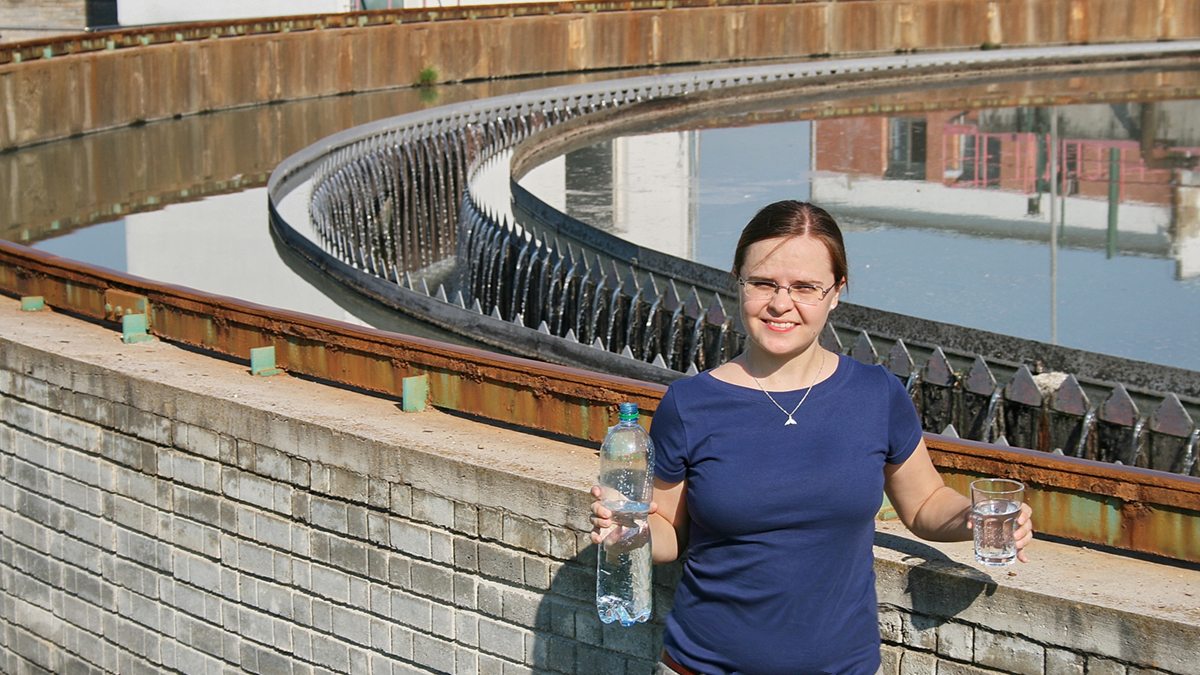By Jael Batty
The UN warns that by 2030, over half the world will be water-stressed, affecting food production and increasing exposure to waterborne disease. There is enormous potential in directly recycled wastewater. Unfortunately, attempts at wastewater recycling have historically been shot down by the public.1 Thus, most treated wastewater is dumped into oceans and other water sources, becoming wasted water.2
Ironically, at the same time, we’ve been consuming indirectly recycled wastewater all along. Many municipalities treat their wastewater and release it into the natural waterways. The same waterways where they get their potable water. “De facto reuse” happens when a water treatment plant unintentionally obtains unregulated recycled wastewater because it’s located downstream from a wastewater plant. Regrettably, when wastewater recycling is a goal set by necessity, it is met with public disgust and distrust.2
For the Dogs
Although recycled wastewater is crystal clear, the thought of drinking it is more appalling to some than the reality of lead or radium in our tap water. In fact, public reactions from those who were offered free bottles of “toilet-to-tap” water varied from “eww,” to the suggestion that toilet water is for dogs.3 In Toowoomba, Australia, Citizens Against Drinking Sewage, successfully crushed proposals to use recycled water by citing health hazards and emotional sensitivities.1
In some states, like Arizona, regulations prohibit recycled water for potable use or for being used where people may have bodily contact, like recreational parks or pools. Some claim outdated regulations put consumers at risk for contamination.4
President of the World Water Council, Benedito Braga, disagrees: “Standards are stricter because of the novelty of the technology and process….The quality from sewage is very good or better than the tap water in any city in the developed world.”1
Experts agree that the stigma is unwarranted. The chemicals and pathogens found in tap water and recycled water are similar, and sometimes lower in recycled water.2
Dr. Carol Nemeroff of University of South Maine studied public perception of recycled water:
“The disgust comes from intuitive concepts of contagion…if you can see sparkling fresh, clear water, and taste it, that helps to overcome the concept … the contagion type thinking decreases with familiarity…if you’re desperate you’ll override anything for survival.”1
Astronauts Do It
Wastewater recycling is taking place:
- One of the first systems was put into practice in 1968 in Namibia as an answer to drought and water-borne disease.1
- Toilet-to-tap is in practice in water-stressed areas such as Australia, California, Israel, Saudi Arabia, and Singapore.5
- American astronauts have been distilling their urine (and moisture from sweat, breath, and shower water) since 2009.6
How It’s Done
Wastewater goes through a primary treatment:
- Screens catch and remove large debris from incoming wastewater (influent).
- Smaller debris is removed in grit tanks.
- Fats, oils, and other floating debris is skimmed from the top.
- Small heavy particles sink to the bottom as sludge from which the water is separated. 7
Then wastewater goes through a secondary treatment:
- The water is mixed with air and living bacteria that break down organic contaminants in the wastewater.
- Wastewater goes through multiple phases of filtration and quality checks.
- Decontamination—chlorination, ozone, UV light, and/or peroxide—kills any remaining pathogens.
- Reverse osmosis forces H2O molecules through pores in a membrane so small that they can only fit molecules through.
- The outgoing wastewater (effluent) is crystal clear.7,8
Exceeding Regulations
Reclaimed water for both Silicon Valley and Santa Clara County, California, undergo microfiltration, reverse osmosis, intense ultra violet light treatment, a hydrogen peroxide treatment, as well as frequent quality checks. Orange County Water District and Orange County Sanitation District in California officials say their “ultra-purified recycled water exceeds all state and federal quality standards.”5
Wastewater can be recycled for potable use either directly into the water supply or indirectly into an environmental buffer before it is returned to the potable water supply.9 However, because the general population rejects the idea of drinking wastewater, most wastewater is indirectly recycled into natural reservoirs prior to mixing it with natural water sources—a hugely unnecessary step to placate the public. Indirect recycling is actually a counter-intuitive measure that re-contaminates purified water and drives up the cost and the energy required to treat potable water.1
But How Does It Taste?
The ultimate taste test, performed by University of California, Riverside, showed that testers had no preference for bottled water over recycled water. Three types of water tested were groundwater-based tap water, indirectly recycled water, and bottled water. The study compared the personality traits of water testers as either “open to experience” or “anxious” about the experience. Those anxious about the experience preferred bottled and recycled water over the mineral-rich tap water. Those open to the experience liked all three samples the same.10
Non-Potable Reuse
Because the public is so wary about consuming wastewater, it is fortunately being reclaimed for following non-potable uses:
- Industrial cooling
- Industrial processing
- Crop irrigation
- Landscape irrigation
- Golf course irrigation
- Public parks
- Dust control
- Toilet flushing
- Breweries
- Wineries
- Construction
- Concrete mixing
- Artificial lakes
All Water Is Recycled
One way or another, all water is recycled. Unfortunately, dumping treated wastewater into our oceans won’t solve the global water crisis in the long run. Direct wastewater recycling through a water treatment plant removes the middle (wo)man—Mother Nature—speeding up the water cycle. It is therefore water quality, and not water source, that is of utmost importance.
References:
- CNN: From toilet to tap: getting a taste for drinking recycled waste water, Kieron Monks, November 17, 2015.
https://www.cnn.com/2014/05/01/world/from-toilet-to-tap-water/index.html - New York TImes: Wasting the wastewater, Dylan Walsh, January 24, 2012.
https://green.blogs.nytimes.com/2012/01/24/wasting-the-wastewater/ - NBC Los Angeles: ‘Toilet to tap’ water put to the taste test, by City News Service, June 22, 2017.
https://www.nbclosangeles.com/news/local/Toilet-to-Tap-Water-Put-to-the-Taste-Test-430193073.html
Video: https://www.nbclosangeles.com/on-air/as-seen-on/Sanitation-Workers-Hand-Out-_Toilet-to-Tap_-Water_Los-Angeles-430044663.html - From Toilet to Tap, Dr. Mercola, June 13, 2018.
https://articles.mercola.com/sites/articles/archive/2018/06/13/recycling-wastewater-to-tap-water.aspx - The Mercury News: toilet to tap? some in drought-prone california say it’s time, Devika G. Bansal, July 5, 2017. https://www.mercurynews.com/2017/07/05/toilet-to-tap-some-in-drought-prone-california-say-its-time/
- Space.com: How recycled astronaut pee boosts chances for future deep-space travel, Samantha Mathewson, November 16, 2016. https://www.space.com/34688-recycled-astronaut-pee-boosts-deep-space-travel.html
- Journey Through the Pipes – What Happens to Wastewater? Angela Lucci, December 4, 2018.
https://wateruseitwisely.com/journey-pipes-happens-wastewater/ - SAMCO: What is a wastewater treatment system and how does it work? December 24, 2016.
https://www.samcotech.com/what-is-a-wastewater-treatment-system-and-how-does-it-work/ - Mother Nature Network: How ‘toilet to tap’ water is made. Robin Shreeves, March 21, 2018.
https://www.mnn.com/lifestyle/recycling/blogs/taste-recycled-waste-water - UCR Today: Toilet-to-tap: gross to think about, but how does it taste? J.D. Warren, March 13, 2018. https://ucrtoday.ucr.edu/52156
- EPA: Water reuse and recycling: community and environmental benefits, https://www3.epa.gov/region9/water/recycling/
Related Posts

This Week in Ag #10
Football may be a game of inches, but farming is a business of fractional inches. Take planting. Seed placement is paramount to the success of a crop. Farmers spend lots of time calculating the optimum rate and depth to plant their seeds based on genetics, soil type, soil conditions, weather, management practices and the desired output

This Week in Ag #13
Corn came screaming out of the ground in just five days on my farm at Agricenter International in Memphis. Other than the seed and herbicide, I’m using 100% Huma® products. My belief is that you don’t just farm the crop, you farm the soil. These Mid-South soils have low organic matter levels, so the pre-plant application

What Differentiates Humic and Fulvic Acids?
By Richard Lamar, PhDDirector of Humic ResearchBio Huma Netics, Inc. For centuries, humic acids (HA) were thought to be composed of much larger molecules than those found in fulvic acids (FA). However, the application of Fourier-transform ion cyclotron resonance mass spectrometry (FT-ICR MS), which separates molecules on the basis of molecular weight, demonstrates that the



